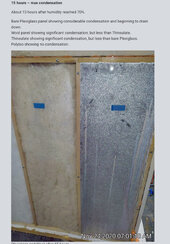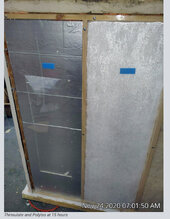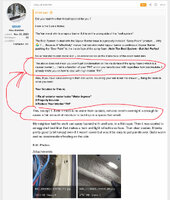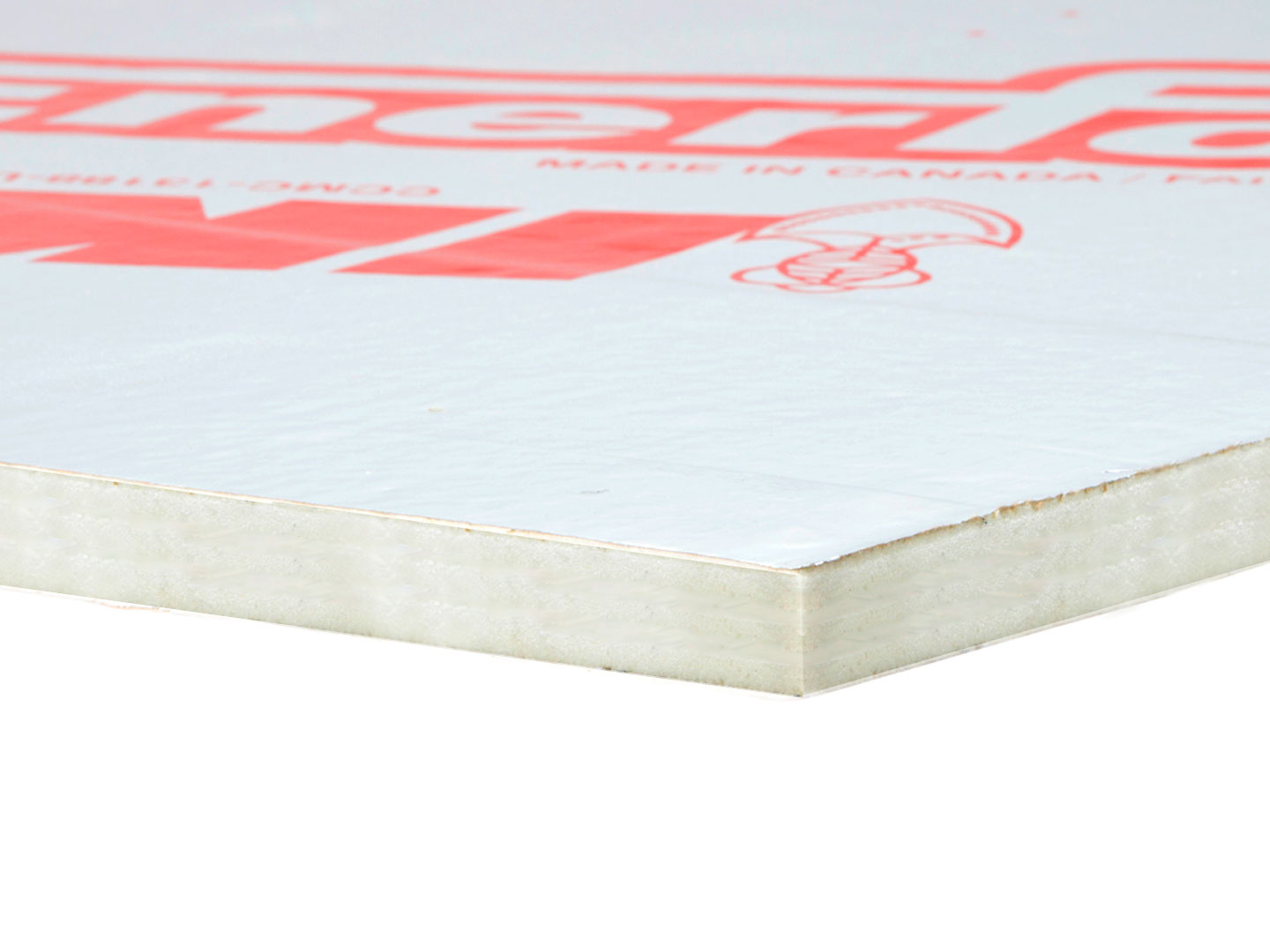Checkthisout
Solar Wizard
- Joined
- Nov 14, 2021
- Messages
- 4,934
A couple tweakers built this in a freeway median in less than a week. They were tired of getting wet in their tent.
View attachment 187226
2.661 litres per 24 hrs is what mine uses on the lowest setting where it runs 99% of the time.I was talking to my mum yesterday and said I had used 10 litres in about 1 and a half weeks but closer to 2 probably. I this is only running and hour or two a day and the cost of that 10 litres was about 16 pounds at 1.62 pound per litre.
That we surmised would cost a fortune to run to keep the van dry running 24 hours a day! At that rate it would go through probably 10 litres a day!!!
I mainly, among some other reasons, started van life as a way to save money and this would have me hemorrhaging money.
Thinking about it doing the skin on the surfaces to avoid condensation buildup seems like the more cost effective option. Even though it may be an initial outlay of I estimate maybe 100 pounds (man I am missing my pound sign on this us keyboard) it would then not cost anything more.
I am fine heat wise even not running it at all except into minus figures so it is only for the van really and the heat way seems an extremely expensive way to solve the problem.
The problem with UK weather though is it is mostly always going to be moist outside and inside isn't it. Uk I have been told is similar to pacific north west united states since I see your image is only US.


This. Except 1. Even if there is no water from outside, exhaled breath overnight is enough to cause a fair amount of moisture to build up in a space that small.Did you read thru that thread I posted for you ?
Here is the Cole’s Notes;
The Van metal skin is a vapour barrier & it is on the wrong side of the “wall system”.
The Best System to deal with the Vapour Barrier issue is a properly installed “Spray Foam” product ,,, Why ?? ,,, Because it “effectively“ makes that van skin metal vapour barrier a continuous Vapour Barrier pushing the “Dew Point” to the inside face of the spray foam. Note The Best System - But Not Perfect
No air transfer to cold metal skin = no condensation on the inside face of the cood metal skin.
The above does not mean you won’t get condensation on the inside face if the spray foam ( which is a vapour barrier ) ,,, that is a function of your “RH” which you have to deal with regardless how you insulate. I already wrote you on how to deal with high interior “RH”.
Also, If you have leaks coming in from rain water, insulating your van is not the answer ,,, fixing the leaks is what you need.
Your Solution to This is;
1 Fix all exterior water leaks “Water Ingress”
2 Properly Insulate
3 Reduce Your Interior “RH”
This. Except 1. Even if there is no water from outside, exhaled breath overnight is enough to cause a fair amount of moisture to build up in a space that small.
My neighbor had his work van spray foamed with urethane, in a thin layer. Then it was coated in an egg shell bed liner that makes a hard and light reflective surface. Then clear coated. It looks pretty good (a bit lumpy) even if it wasn't cover but would be easy to put panels over. Quite warm and no condensation/frosting on the skin.
Edit. Photos

Except 1 was covered in my post;
View attachment 187323
Your Neighbour & “space age” ”thin” urethane ?? ,,, Got a “Performance Spec” ??
I’m like “Joe Friday” ,,, Just the Facts !!
In this case, Just the Science
What’s the R Value ?
Come back with the manufactured performance specs & I will look at it.
”Lizard Skin” or “Snake Oil” ,,, No Thanks ,,, Just the Facts
Friday was yesterday, Joe. Youre not fooling me.
There will be moisture, if it doesn't come from outside it will come from what you exhale or from cooking. Not sure where we disagree.
Nothing space age about it. Polyisocyanurate foam has been around since the 70s though its less flammable now.
I have the same foam (filled to R25) in my cabin and have not had condensation on the foam even at -35f.
R7, data sheet attached.
Thickness is determined by the sprayer. Its a bit tricky because it continues to expand after application so takes some practice to get the fill thickness right. The local shop that did it tried to do a cavity fill once and it cost them a new van body.
Bond strength is about 50psi on a cleaned surface.
I was told by my shop it is fire retardant but had a pretty bad fire with the same stuff in a small enclosed space a few years ago. Its nasty when burnt.

If you have an area that seems to stay moist and needs ventilation then just a fan blowing on it, no heat needed, just the fresh aire should be enough. Fan can be very low speed, maybe even a computer fan.Would a heat duct and a fan pulling air from the roof down to the floor in the back of the van which seems to stay damp be effective?
I have the thermometer up in the headliner and it reads high temps 15-25c. So could I put the duct up there with a fan sucking and send the duct to the back of the van where the damp does not seem to shift? I am confused why it doesn't remove the damp back there. Given it is such a small van I would have expected the whole space to heat pretty quickly.
Anyway would the above suggestion produce be a good idea to circulate and recycle that warm air? I already bought the 100mm duct just didn't know what to do with it yet. Originally was going to put over the heater to direct it however since it is a stove not a normal diesel heater the heat exhaust is not a simple circle so would be quite a job to make an enclosed to capture that properly. I thought capturing from up high where it pools would be an easier way and pull it through with the spare fan I have.
Would a heat duct and a fan pulling air from the roof down to the floor in the back of the van which seems to stay damp be effective?
I have the thermometer up in the headliner and it reads high temps 15-25c. So could I put the duct up there with a fan sucking and send the duct to the back of the van where the damp does not seem to shift? I am confused why it doesn't remove the damp back there. Given it is such a small van I would have expected the whole space to heat pretty quickly.
Anyway would the above suggestion produce be a good idea to circulate and recycle that warm air? I already bought the 100mm duct just didn't know what to do with it yet. Originally was going to put over the heater to direct it however since it is a stove not a normal diesel heater the heat exhaust is not a simple circle so would be quite a job to make an enclosed to capture that properly. I thought capturing from up high where it pools would be an easier way and pull it through with the spare fan I have.
Why "definitely not as good". The wattage is rated at the same and it does have a fan to force the air around. The only difference is it is not coming out of a cylindrical hole but rather a flat letterbox shaped aperture.So it's something like this? The heat just comes off the cooktop? Definitely not as good as a regular heater that you mount on the floor, in terms of heating and forcing air movement.
Anything you can do to circulate the air will help.
If you have an area that seems to stay moist and needs ventilation then just a fan blowing on it, no heat needed, just the fresh aire should be enough. Fan can be very low speed, maybe even a computer fan.
Lol so many conflicting opinions.No
Imagine trying to dry out an evaporator coil of an a/c system by blowing air across it. The uninsulated steel of your van combined with 100% saturated air (its raining) is nothing more than blowing air onto an evaporator coil.
You need a dehumidifier or insulate.
Circulating warm, wet air will do nothing to dry the space out.
Lol so many conflicting opinions.
Heat usually works better when it's coming from the floor, rather than counter height. Like it will actually heat the floor, you don't have to try to recirculate the air to heat the areas below your heater.Why "definitely not as good". The wattage is rated at the same and it does have a fan to force the air around. The only difference is it is not coming out of a cylindrical hole but rather a flat letterbox shaped aperture.


